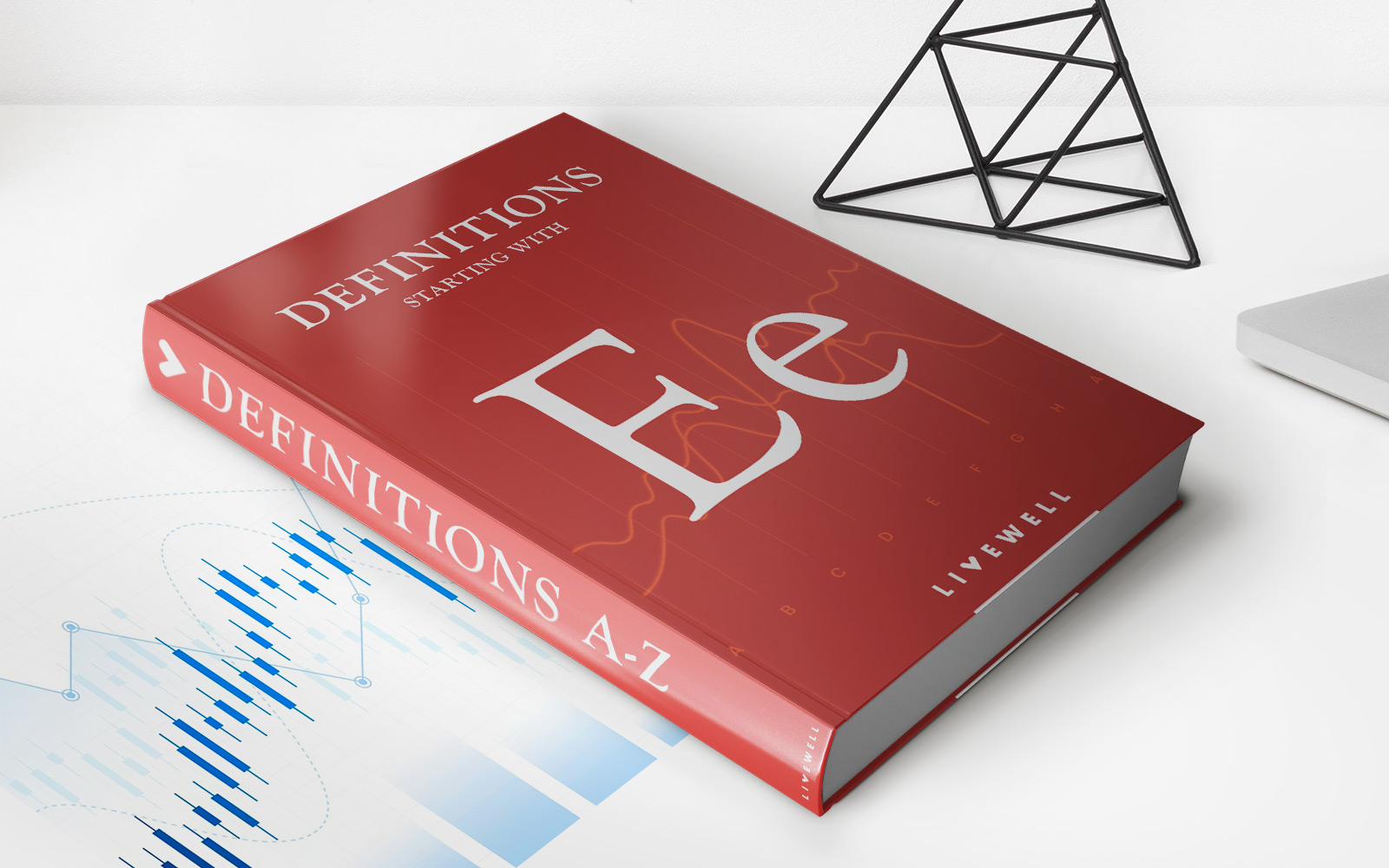

Finance
How To Get Your 401K In Gold Without Penalty
Modified: February 21, 2024
Learn how to diversify your retirement savings with gold. Discover the tax-efficient way to invest in gold with your 401K and avoid penalties.
(Many of the links in this article redirect to a specific reviewed product. Your purchase of these products through affiliate links helps to generate commission for LiveWell, at no extra cost. Learn more)
Table of Contents
Introduction
When it comes to planning for retirement, many individuals rely on employer-sponsored 401K plans to secure their financial future. A 401K is a powerful tool that allows individuals to save and invest for retirement while receiving potential tax advantages. While most people are aware of the traditional investment options within a 401K, such as stocks and bonds, there might be an alternative avenue worth exploring – investing in gold.
Gold has long been considered a safe haven asset, providing a hedge against economic uncertainties and inflation. As such, more and more investors are seeking to include gold in their portfolios as a means of diversification and protecting their wealth. However, you may be wondering if it’s possible to get your 401K in gold without incurring penalties.
In this article, we will delve into the intricacies of accessing your 401K and investing in gold, ensuring you understand the options available to you. We will explore the penalties associated with early withdrawal, the rollover option, and the steps involved in getting your 401K in gold. Additionally, we will discuss the benefits and risks of investing in gold and outline important considerations to keep in mind before converting your 401K to gold.
By gaining a comprehensive understanding of these details, you will be better equipped to make informed decisions about your retirement investments and potentially capitalize on the benefits of investing in gold within the constraints of your 401K.
What is a 401K?
A 401K is a type of retirement savings plan typically offered by employers to their employees. It gets its name from the section of the U.S. Internal Revenue Service (IRS) code that governs these plans, specifically section 401(k).
With a 401K, employees can contribute a portion of their pre-tax income into an investment account. These contributions are not subject to income tax at the time of contribution, allowing individuals to potentially reduce their taxable income and increase their take-home pay. Additionally, the earnings generated within the 401K account are tax-deferred, meaning they are not taxed until the funds are withdrawn during retirement.
Many employers also offer a matching contribution, where they match a portion of the employee’s own contributions. This matching contribution can significantly boost the overall growth of the 401K account, providing employees with an even greater opportunity to save for retirement.
One key feature of a 401K is the contribution limits. The IRS sets annual limits on how much individuals can contribute to their 401K accounts. For 2021, the contribution limit is $19,500 for individuals under the age of 50. Individuals aged 50 and older can make an additional catch-up contribution of up to $6,500, bringing their total contribution limit to $26,000.
It’s important to note that 401K plans are subject to certain eligibility requirements, which can vary from company to company. Typically, employees must meet certain criteria, such as a minimum age and minimum length of service, before they are eligible to participate in their employer’s 401K plan.
Overall, a 401K provides individuals with a tax-advantaged way to save and invest for retirement. By making regular contributions and potentially benefiting from employer matching, employees can build a substantial nest egg over time to support their financial needs in retirement.
Understanding the Penalties for Early Withdrawal
While a 401K is designed to be a long-term retirement savings plan, there may be situations where individuals find themselves in need of immediate funds. However, withdrawing funds from a 401K before reaching the age of 59 ½ can have significant financial consequences.
When you withdraw funds from your 401K before the specified age, you will typically face both income taxes and early withdrawal penalties. The amount of the penalty can vary, but it is usually 10% of the withdrawn amount. Additionally, the withdrawn funds are subject to income taxes. This means that you will not only be reducing the size of your retirement nest egg, but you will also owe taxes on the amount withdrawn, potentially pushing you into a higher tax bracket.
It’s important to understand that there are circumstances where early withdrawal penalties can be waived or reduced. Some of the common exceptions include:
- Permanent disability
- Medical expenses exceeding 10% of your adjusted gross income
- Qualified education expenses
- First-time homebuyer expenses
If you find yourself in a situation where you need to access your 401K funds early, it is crucial to consult with a financial advisor or tax professional to ensure you understand the implications and explore any possible exceptions that may apply to your situation.
Another option to consider before resorting to early withdrawal is taking out a loan from your 401K. Many 401K plans offer loan provisions that allow participants to borrow against their account balance. By taking a loan, you can access the funds you need without triggering early withdrawal penalties, as long as you repay the loan according to the plan’s terms.
However, it’s important to recognize that taking a loan from your 401K should be carefully considered, as it can have consequences on your retirement savings. Removing funds from your account temporarily can mean missing out on potential investment growth, and if you leave your job before repaying the loan, it may need to be repaid in full or treated as an early withdrawal.
In summary, early withdrawal from a 401K can result in taxes and penalties that diminish your savings and can have long-term implications on your retirement plans. Exploring alternative options, such as exceptions to early withdrawal penalties or utilizing a loan provision, may be more favorable strategies to consider before tapping into your 401K funds prematurely.
Utilizing the 401K Rollover Option
If you’re considering investing in gold through your 401K, one option to explore is the 401K rollover. A rollover allows you to transfer the funds from your existing 401K into a new investment vehicle, such as a self-directed IRA, that allows for gold investments.
There are two primary types of rollovers: direct rollover and indirect rollover. With a direct rollover, the funds in your 401K are transferred directly to the new investment vehicle, ensuring a seamless transition without incurring any tax implications or penalties. On the other hand, an indirect rollover involves receiving the funds from your 401K and then personally depositing them into the new investment account. While this option can still be done without incurring penalties, you must complete the rollover within 60 days to avoid taxes and penalties.
When considering a rollover, it’s essential to understand the eligibility requirements and any associated fees. Some 401K plans may have restrictions on rollovers or charge a fee for the process. Contacting your plan administrator or consulting with a financial advisor can provide you with the necessary guidance and information.
Once the funds are successfully rolled over into a self-directed IRA, you can then explore the option to invest in gold. Self-directed IRAs offer more flexibility in investment choices compared to traditional IRAs and 401K plans. You can invest in various forms of gold, including physical gold bars or coins, gold ETFs (exchange-traded funds), or gold mining stocks.
However, it’s important to note that not all self-directed IRAs allow for gold investments. Carefully review the options and guidelines provided by the financial institution handling your self-directed IRA to ensure that investing in gold is an available choice.
By utilizing the 401K rollover option and transitioning your funds into a self-directed IRA, you can gain the flexibility to invest in gold within the confines of your retirement account. This allows you to potentially benefit from the stability and long-term growth potential of gold while maintaining the tax advantages provided by retirement accounts.
Exploring the Option to Invest in Gold
Investing in gold within your 401K can provide an additional layer of diversification to your retirement portfolio. Gold has long been regarded as a store of value and a hedge against inflation, making it an attractive asset for investors seeking stability and protection during uncertain economic times.
There are several ways to invest in gold, each with its own advantages and considerations:
- Physical Gold: One option is to invest in physical gold, such as gold bars or coins. This allows you to have direct ownership of the precious metal. Keep in mind that storing and securing physical gold can add an extra layer of responsibility and potential costs.
- Gold ETFs: Gold exchange-traded funds (ETFs) provide a convenient way to invest in gold without the need for physical ownership. These investment vehicles trade on stock exchanges and aim to closely track the price of gold. Investing in gold ETFs eliminates the challenges of storing and insuring physical gold.
- Gold Mining Stocks: Another option is to invest in gold mining stocks. These stocks represent shares in companies that are involved in the exploration, extraction, and production of gold. Investing in gold mining stocks allows you to indirectly participate in the potential success of gold mining operations.
Before diving into any investment option, it’s important to conduct thorough research and consider the associated risks and potential rewards. Gold, like any investment, can experience fluctuations in value, and its performance can be influenced by various factors such as economic conditions, global events, and supply and demand dynamics.
Furthermore, it’s important to understand that investing in gold does not guarantee a profit or protect against losses. Gold should be viewed as a long-term investment strategy aimed at diversifying your portfolio and potentially reducing overall risk.
As with any investment decision, it’s wise to seek guidance from a financial advisor who specializes in retirement planning and understands the complexities of incorporating gold into your investment strategy. They can provide valuable insights and help you make informed decisions based on your individual financial goals and risk tolerance.
By exploring the option to invest in gold within your 401K, you have the opportunity to add a valuable asset to your portfolio, potentially providing stability and protection against economic uncertainties. However, careful consideration and research are essential to ensure that gold aligns with your long-term investment objectives and risk tolerance.
Steps to Get Your 401K in Gold
If you’ve decided to invest in gold through your 401K, here are the general steps to follow:
- Evaluate Your 401K: Begin by assessing your current 401K plan and understanding its rules and restrictions relating to investment options. Review the plan documents or consult with your plan administrator to determine if gold investments are allowed.
- Research Custodians: Look for reputable custodians or financial institutions that offer self-directed IRAs that allow for gold investments. Compare their fees, services, and experience in handling precious metal investments. It’s crucial to choose a custodian who is knowledgeable and experienced in gold investment transactions.
- Open a Self-Directed IRA: Once you’ve chosen a custodian, open a self-directed IRA account with them. Follow their instructions and provide any necessary documentation to establish the account.
- Initiate the Rollover: Contact your current 401K plan administrator and request a rollover of funds. They will assist you in initiating the transfer of funds directly to your newly opened self-directed IRA. Make sure to follow the specific instructions provided by both the 401K plan administrator and the custodian.
- Select the Gold Investments: After the funds have been successfully rolled over into your self-directed IRA, work closely with your custodian to navigate through the available gold investment options. Depending on your preference, you can select physical gold, gold ETFs, or gold mining stocks. Ensure that the investments comply with the guidelines and requirements set forth by your self-directed IRA provider.
- Complete the Purchase: Once you have decided on the specific gold investments, instruct your custodian to execute the purchase on your behalf. The custodian will facilitate the transaction and ensure proper documentation and record-keeping of the purchased assets.
- Monitor and Manage Your Investment: Once your gold investments are in place, regularly monitor their performance and stay informed about market trends and developments. Your custodian can provide statements and reports to help you track the value of your investments.
Throughout this process, it’s important to maintain open communication with your custodian and seek professional advice if needed. They can guide you through the technicalities and help ensure compliance with IRS rules and regulations.
Remember that investing in gold within your 401K requires careful consideration and due diligence. Make informed investment decisions based on your financial goals, risk tolerance, and long-term retirement strategy.
Benefits and Risks of Investing in Gold
Investing in gold within your 401K can offer several benefits, but it’s essential to understand the associated risks as well. Here are some key advantages and considerations:
Benefits:
1. Diversification: Gold is known for its ability to act as a diversification tool. It tends to have a low correlation with other assets like stocks and bonds, which means that when other investments decline, gold may hold or even increase in value. By including gold in your portfolio, you can potentially reduce overall risk and increase the potential for stable returns.
2. Hedge against Inflation: Gold has historically been seen as a hedge against inflation. During times of rising inflation, the value of fiat currencies may decline, but gold tends to retain its purchasing power. Investing in gold can help protect your wealth from the erosion caused by inflation.
3. Store of Value: Gold has been regarded as a store of value for centuries. Its durability and scarcity make it a sought-after asset. While the value of currencies can fluctuate, gold has stood the test of time as a tangible asset with intrinsic worth.
4. Liquidity: Gold investments can be relatively liquid, meaning they can be easily bought or sold. This liquidity ensures that you have the ability to convert your gold investments into cash when needed, providing a level of flexibility.
Risks:
1. Price Volatility: Like any investment, the price of gold is subject to market fluctuations and can be volatile. While gold has shown long-term stability, short-term price swings can be dramatic. It’s important to be prepared for potential price fluctuations and have a long-term investment horizon.
2. No Dividend or Interest Income: Unlike some other investments, gold does not generate income in the form of dividends or interest. The potential returns from gold investments primarily come from capital appreciation. This lack of income may not be suitable for investors seeking regular cash flow.
3. Storage and Security: If you choose to invest in physical gold, you will need to consider the costs and logistical aspects of storing and securing the precious metal. Proper storage and security measures are crucial to protect your investment from theft or damage.
4. Market Manipulation: The gold market, like any financial market, can be subject to manipulation and speculation. It’s important to stay informed and be cautious of potential fraudulent schemes or misleading information that could impact the value and performance of your gold investments.
It’s crucial to evaluate both the benefits and risks of investing in gold within your 401K. Consider your investment goals, time horizon, and risk tolerance before making any investment decisions. Consulting with a financial advisor can provide valuable insights and help you navigate the complexities of gold investments.
Remember that the value of gold investments can go up or down, and past performance is not indicative of future results. Thorough research, diversification, and a long-term perspective are vital when incorporating gold into your retirement portfolio.
Considerations Before Converting Your 401K to Gold
Before making the decision to convert your 401K to gold, it’s essential to carefully evaluate several key considerations. These factors can help you make an informed decision that aligns with your financial goals and retirement strategy:
1. Risk Tolerance: Assess your risk tolerance and investment objectives. Investing in gold can offer stability and potential long-term growth, but it’s important to understand that its value can fluctuate. Consider your willingness to accept market volatility and potential short-term losses for the potential benefits of investing in gold.
2. Diversification: Evaluate the diversification of your overall investment portfolio. Gold can provide diversification and act as a hedge against economic uncertainties. Consider whether adding gold investments aligns with your existing investments and contributes to a well-diversified portfolio.
3. Time Horizon: Consider your investment time horizon. Investing in gold is best suited for long-term goals and should align with your retirement timeframe. Gold can act as a hedge against inflation and provide long-term stability, but its short-term price fluctuations should not overshadow your broader investment strategy.
4. Custodial and Storage Fees: Understand the fees associated with owning and storing gold. If you choose to invest in physical gold, you will need to consider costs related to secure storage and insurance. Additionally, custodians who handle self-directed IRAs may charge fees for managing gold investments. Factor in these costs when assessing the potential returns of investing in gold.
5. Market Knowledge: Educate yourself about the gold market and the factors that influence its price. Stay informed about global economic trends, geopolitical events, and supply and demand dynamics that can impact the value of gold. Being knowledgeable about the market can help you make better-informed investment decisions.
6. Professional Guidance: Consider seeking guidance from a financial advisor or investment professional who specializes in retirement planning and understands the intricacies of investing in gold. They can offer insights, address your specific concerns, and help you navigate the complexities associated with converting your 401K to gold.
7. Tax Implications: Understand the tax implications of converting your 401K to gold. Depending on the type of account you have and the specific gold investment vehicle chosen, there may be tax considerations to keep in mind. Consult with a tax advisor to assess the potential tax consequences and ensure compliance with IRS rules and regulations.
8. Exit Strategies: Consider your exit strategies and understand the liquidity of your gold investments. Determine how and when you may want to sell or liquidate your gold investments and ensure that you have a plan in place.
By carefully considering these factors, you can make an informed decision about converting your 401K to gold. Remember that investing in gold, like any investment, carries risks and requires thorough research and a long-term perspective. Consult with professionals to guide you through the process and help you make decisions aligned with your financial goals.
Conclusion
Investing in gold within your 401K can be a compelling option for individuals seeking to diversify their retirement portfolios and take advantage of the potential benefits that gold offers. However, it’s crucial to carefully evaluate the considerations and understand the risks associated with such a decision.
Before converting your 401K to gold, assess your risk tolerance, evaluate your investment goals, and consider your time horizon. Take into account the potential benefits of diversification and the long-term stability that gold can provide. Additionally, thoroughly research the various investment options available, understand the associated fees and tax implications, and seek guidance from financial advisors and industry experts.
Remember that investing in gold, like any investment, involves risk. The price of gold can fluctuate, and there are costs associated with owning and storing physical gold. You must also keep yourself informed about the gold market and global economic trends that can impact its value.
By conducting due diligence and making informed decisions, you can potentially enhance your retirement portfolio and protect your wealth from inflation and economic uncertainties. Investing in gold within your 401K can contribute to a well-diversified retirement strategy, helping you achieve both financial stability and long-term growth.
Ultimately, the decision to convert your 401K to gold should align with your individual financial goals and risk tolerance. It’s important to develop a comprehensive retirement plan with the guidance of professionals who can help you navigate the complexities of investing in gold and ensure that it fits into your broader financial strategy.
Remember that every individual’s financial situation is unique, and what works for one person may not work for another. Carefully consider your circumstances and consult with financial advisors who can provide personalized advice based on your specific needs.
By taking the time to understand the implications, benefits, and risks associated with investing in gold within your 401K, you can make well-informed decisions that align with your retirement objectives and work towards building a secure and prosperous financial future.














